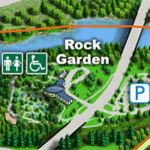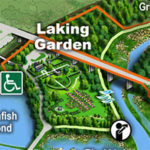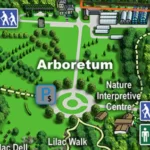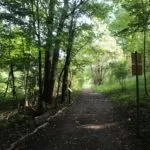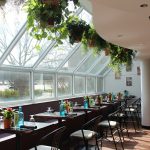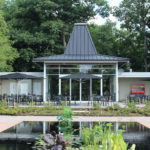| Membership | Price (+HST) |
|---|---|
| Single | $85/year |
| Single Plus | $120/year |
| Family | $130/year |
| Family Plus | $175/year |
| Contributing | $300/year |
| Supporting | $600/year |
| Sustaining | $1,000/year |
| Benefactor's Circle | $2,500/year |
| Director's Circle | $5,000/year |
| President's Circle | $10,000/year |
Horticulture & Collections
Horticulture & Collections
As a botanical garden, Royal Botanical Gardens acquires, collects, researches, exhibits, conserves and interprets a living horticultural collection. A key component of this role is the work done by the horticulture department which is responsible for 130 acres of cultivated gardens over four garden areas.
Major Collections
With tens of thousands of plants in our four cultivated garden areas, there is always something interesting growing at RBG. Here are some of the key collections curated by the Royal Botanical Gardens’ horticulture department.
Katie Osborne Lilac Collection
PEAK INTEREST: LATE MAY
Visit one of the largest and most magnificent and diverse lilac collections in the world as The Katie Osborne Lilac Collection reaches peak bloom in the lilac dell at RBG’s Arboretum.
Rose Garden
PEAK INTEREST: JULY TO AUGUST
Enjoy RBG’s rejuvenated rose garden, featuring cold-hardy roses surrounded by beneficial companion plants that bring beautiful colour to this sustainable garden all season long!
Iris Collection
PEAK INTEREST: JUNE AND JULY
Experience a mesmerizing rainbow of colour, with over 1,000 types of iris at Laking Garden, including tall bearded, dwarf bearded, Siberian, spuria, and more.
Peony Collection
PEAK INTEREST: JUNE
Given its age, RBG’s collection offers a unique history of peonies, displaying a range of cultivars and hybridizer introductions from the 19th, 20th and 21st century. As a result, it is now one of the most diverse and unique peony collections in North America.
Flowering Cherry Collection
PEAK INTEREST: EARLY MAY
Flowering cherries (sakura) grace RBG’s gardens with typically white or pink flowered blooms and have an ephemeral grace and beauty shared by no other type of plant. These trees which at peak bloom look like clouds of pink and white are one the most welcome signs that spring has finally sprung!
Magnolia Collection
PEAK INTEREST: LATE APRIL, EARLY MAY
Magnolias produce spectacular flowers in a range of colours, from white and cream to pale to deep pink, purple, rose and less commonly soft yellows. Featuring large, delicate petals on towering trees, don’t miss this ephemeral collection each spring.
Heritage Trees
The cultivated gardens and nature sanctuaries of Royal Botanical Gardens are home to over 20 individuals classified as “heritage trees.”
Additional Collections
- Peonies
- Flowering Crabapple
- Toni Carson Shrub Collection
- Dogwood and Redbud
- Pinetum
- Cacti and Succulents
- Mediterranean plants
- Medicinal plants
- Native plants
- Conifers
- Rock Garden perennials
- Clematis
- Heritage plants
Seasonal Blooms & Plants of Interest
Blooms are ever-changing in RBG’s four cultivated garden areas as well as its nature sanctuaries. Find a general bloom calendar & see what’s blooming now.
About Horticulture at RBG
The department currently maintains 50 collections featuring plants of wild origin, ornamental plants and plants of scientific and conservation importance. Both woody and non-woody plants are displayed within the collections. Each collection is curated like a museum collection or exhibit and supports the scientific, horticultural educational and conservation work undertaken at RBG. The Gardens keep detailed plant records and plants are labeled and interpreted for the benefit of our visitors. Undertaking this kind of work is one of the reasons that we are botanical garden and not simply a city or municipal park, private garden, amenity landscape or general green space. The information we curate, and document is made available to visitors, students, scholars, scientists, government departments, other botanical gardens, environmental organizations, conservation authorities and the media.
Along with the responsibility for our living collections, the horticulture department builds and maintains gardens and displays to exhibit our collections and to address key issues in horticulture such as sustainable practices, climate change and landscape trends. The gardens are managed to have as little impact on the surrounding natural areas as possible.
One of the most important areas of horticultural research is conducting trials and evaluations on new plants acquired for our collections. These trials are carried out each year in partnership with organizations as diverse as other botanical gardens, the University of Guelph, All America Selections, major plant breeders, nurseries and flower societies.
In addition, the department is involved with horticultural outreach and continues to build strong relationships with Landscape Ontario, Master Gardeners of Ontario, Ontario Horticultural Association, Garden Clubs of Ontario, specialist societies and the institutions training students in the field.

Support Horticulture at RBG
The care and growth of our horticultural collections are possible thanks to the generous support of RBG Members and donors. With a donation to Royal Botanical Gardens, you can ensure an active, vibrant and healthy future for the children of today and tomorrow through our horticultural and conservation projects.
Royal Botanical Gardens (RBG) is the largest botanical garden in Canada, a National Historic Site, and registered charitable organization with a mandate to bring together people, plants and nature.
Read More from the Horticulture Team
Read more about the thoughts and projects of RBG’s horticulturists! Find more interesting articles and announcements at rbg.ca/blog



